It’s easy to walk Boston’s Freedom Trail: just follow the red brick line.

I walked the Freedom Trail with three friends when I was in college, but it was better walking with a guide who had stories to tell about everything along the way–for example, the Boston Massacre. The words “Boston Massacre” bring to mind a picture of British soldiers mercilessly slaughtering at least dozens of innocent American revolutionaries for no particular reason. Here’s the marker that indicates where the massacre took place.

Unlike my college friends and me, our guide had a copy of the leaflet printed after the massacre. The guide also knew the truth about the massacre, which my college friends and I did not. Basically, it was a beer brawl between some (mostly drunken) freedom fighters and some (also mostly drunken) British soldiers. Somebody pushed or shoved or said the wrong thing and guns went off. Five freedom fighters died. Tragic, but hardly a massacre.
Samuel Adams liked to incite political action, thrived on pandemonium and controversy, and didn’t mind making up an alternate truth for a more colorful effect. In addition, he especially liked to cast himself in the starring role of that action to advocate for his own political purposes and benefit. It was Samuel Adams who “suggested” that a leaflet about the “massacre” be printed, and he also “suggested” the text to be written on it. According to our guide, good old Sam maneuvered many other political actions in a similar way for his own benefit. Here’s a copy of the leaflet. No wonder people think it was an act of merciless aggression.

Our four-hour walk took us to many of the well-known historic sights in Boston. Here’s Paul Revere’s house; . . .
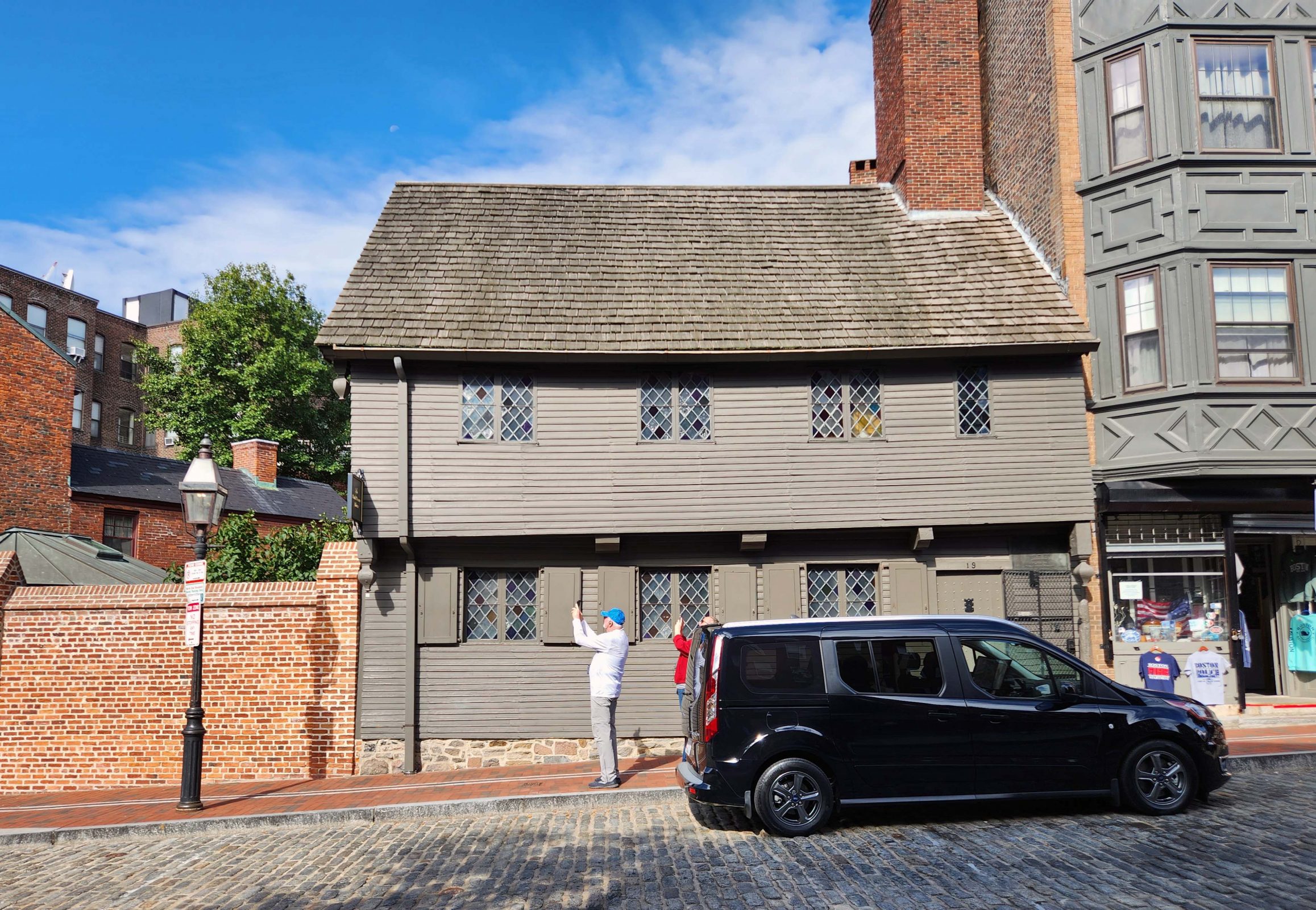
. . . this is the Old North Church; . . .
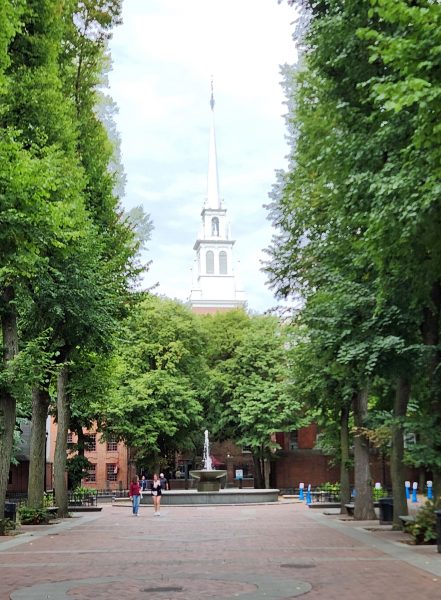
. . . and here’s Faneuil Hall. We walked through a cemetery near Faneuil Hall where lots of the famous Revolutionary era Americans are buried. (Check out the guy in the bright blue jacket. ♥)
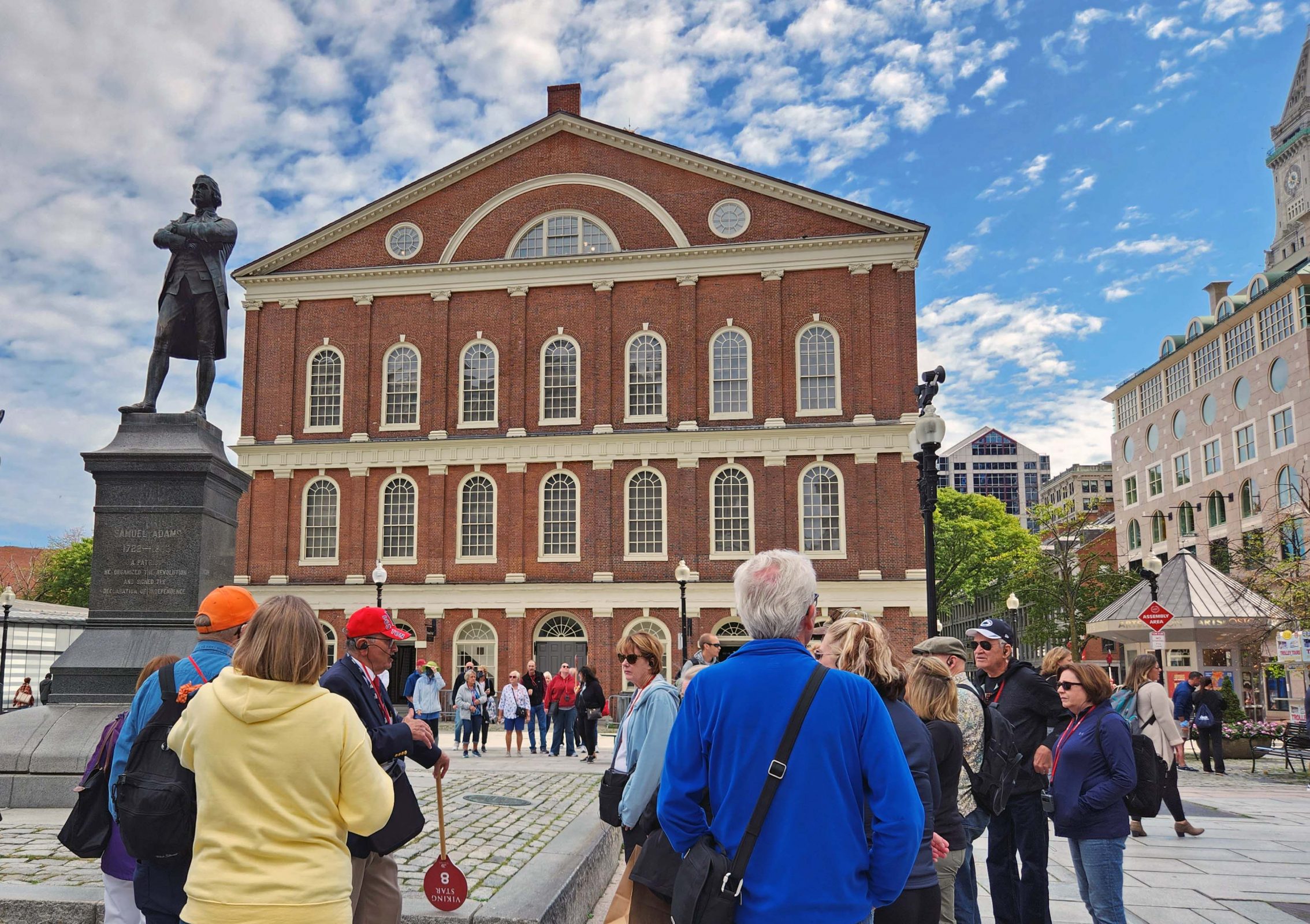
This is the state capitol building. The dome was originally built of wood. Paul Revere plated it with copper, and later, it was covered in 24-karat gold. Boston has many buildings with gold domes and trim.

It was interesting to see so many Early American-style buildings in Boston and I enjoyed looking at the architecture along the Freedom Trail.

Just for fun, along the Freedom Trail, our guide pointed out two taverns with unique names. The first was called The 21st Amendment (repealed prohibition); the second was named Carrie Nation (a temperance advocate). When the guide asked the significance of the taverns’ names, everyone knew The 21st Amendment, but I was the only one who knew Carrie Nation. It wasn’t like Jeopardy!–there was no cash award–so on with the walk.
It was interesting to note how many Dunkin’ Donuts and Starbucks shops are in downtown Boston. They seemed to be on every corner and always near each other. On one street, we saw two Starbucks stores within 100 feet of each other! Is there a competition to see who can have the most restaurants?
Speaking of restaurants, like many cities, Boston offered outdoor dining during the COVID pandemic. It was so popular, that many of the restaurants have continued to offer it. Outdoor dining is one of my favorite things about Europe and I’m happy to see more of it at home. Note the Freedom Trail in the left photo below.
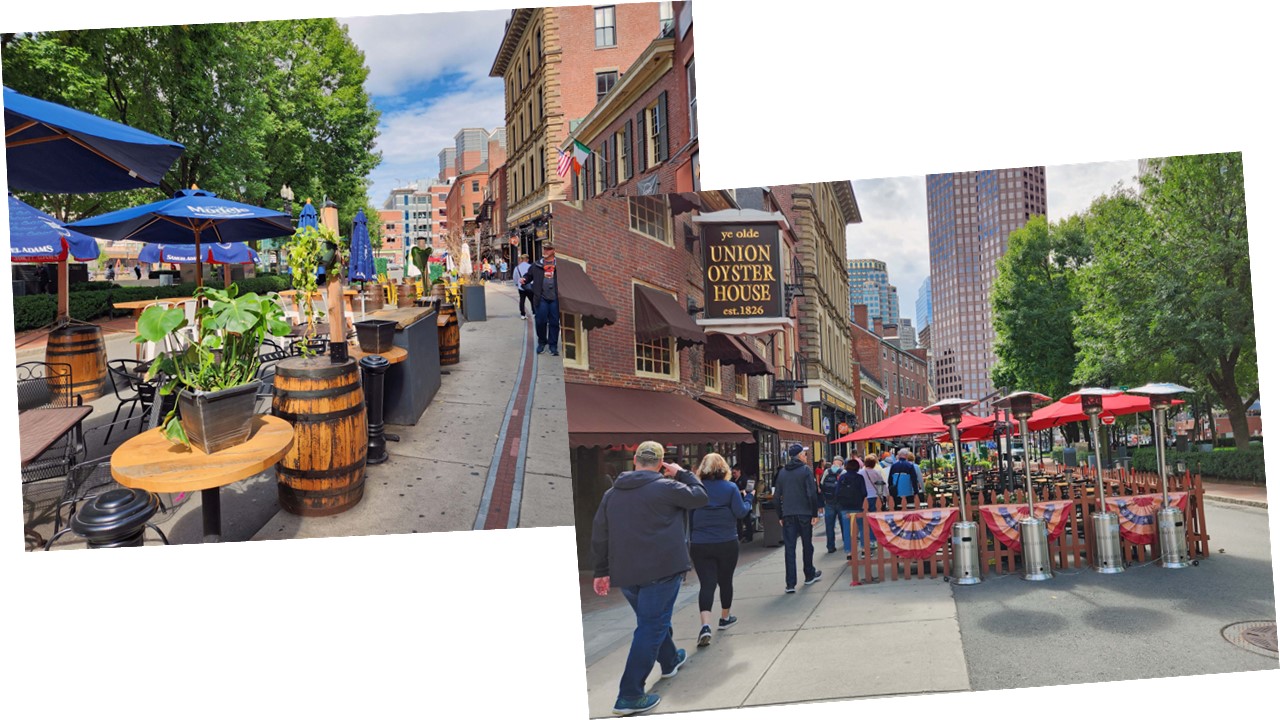
We left Boston in the late afternoon and cruised through the Cape Cod Canal. It’s a shortcut from Boston to New York City across the neck of Cape Cod. The homes and greenery were beautiful and there was a walking/biking trail along the shoreline, complete with walkers and bikers. Sometimes, people on the shore would call out a “hello” to us (everyone on the ship standing at their veranda railings) and we’d return their greetings. Maybe our passage through the canal seemed so idyllic because the air was quiet and still and the water was calm as the sun was setting.
In this photo, you can see the walking/biking trail.

We sailed under a railroad draw bridge. I made up that name–it doesn’t really draw apart; it rises. The tracks across the canal are raised for ships to pass and then lowered to the level of the railroad track that crosses the canal.
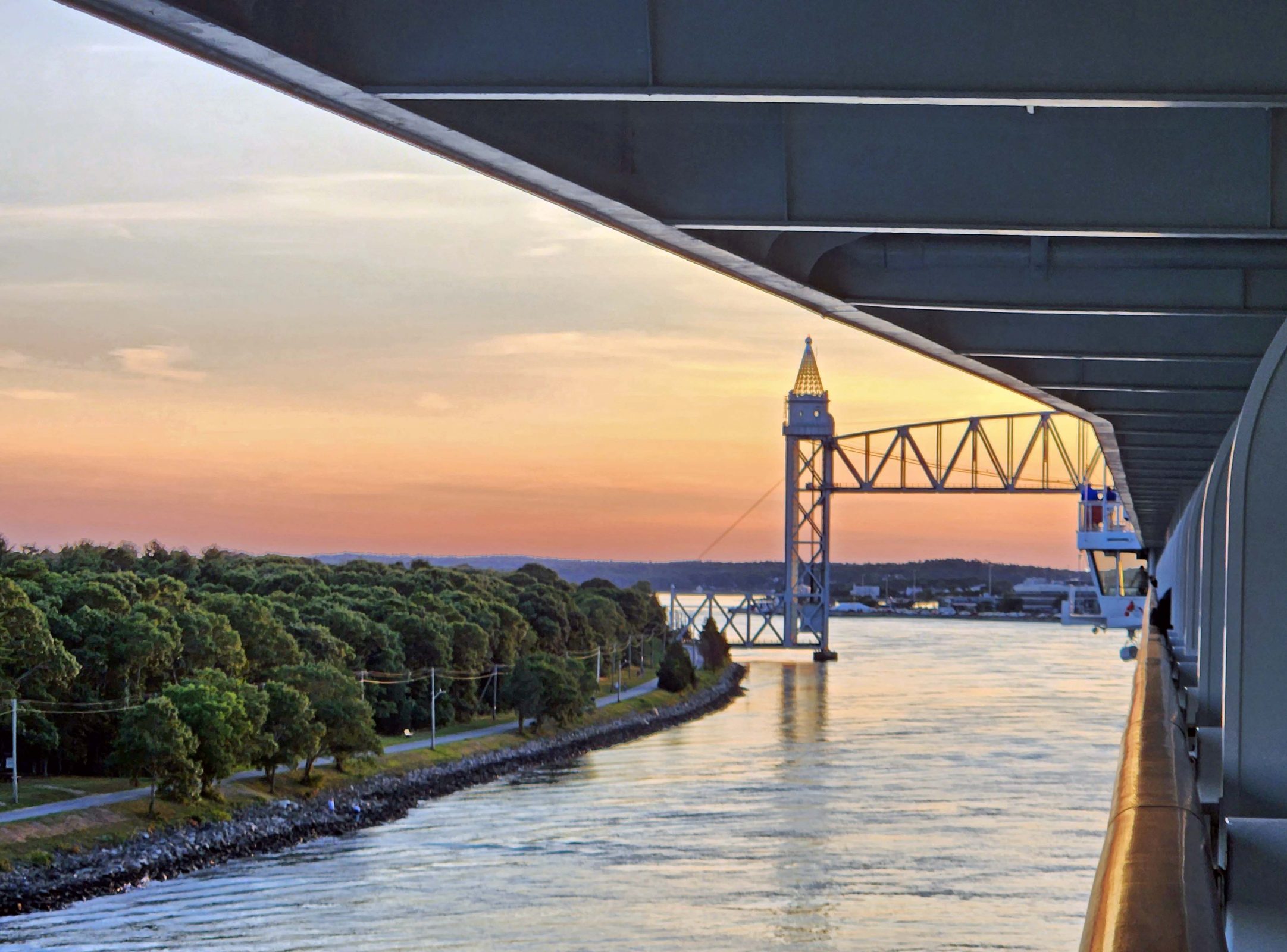

The houses and their settings are beautiful. The parking lot is at the end of the walking/biking trail.
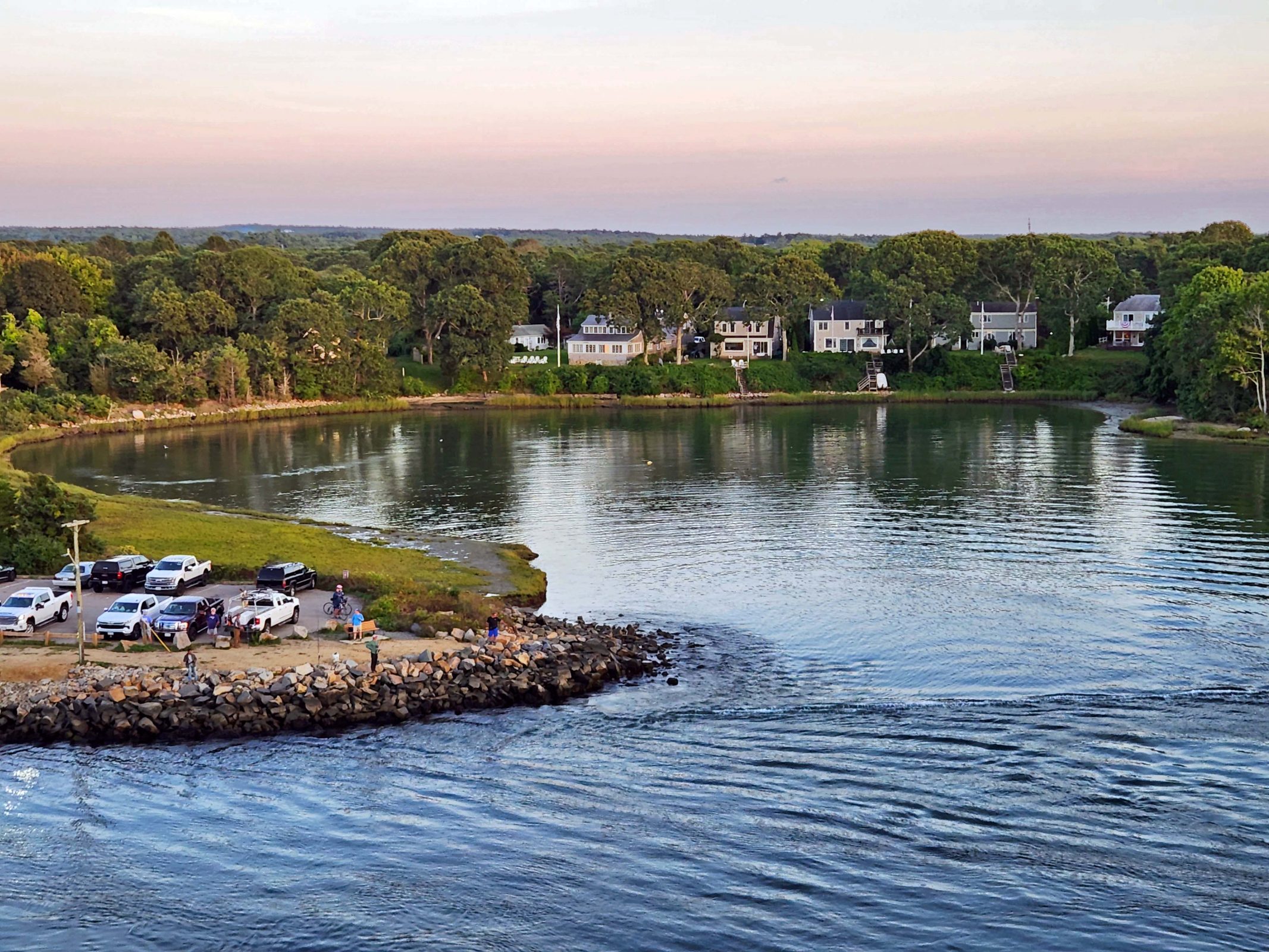
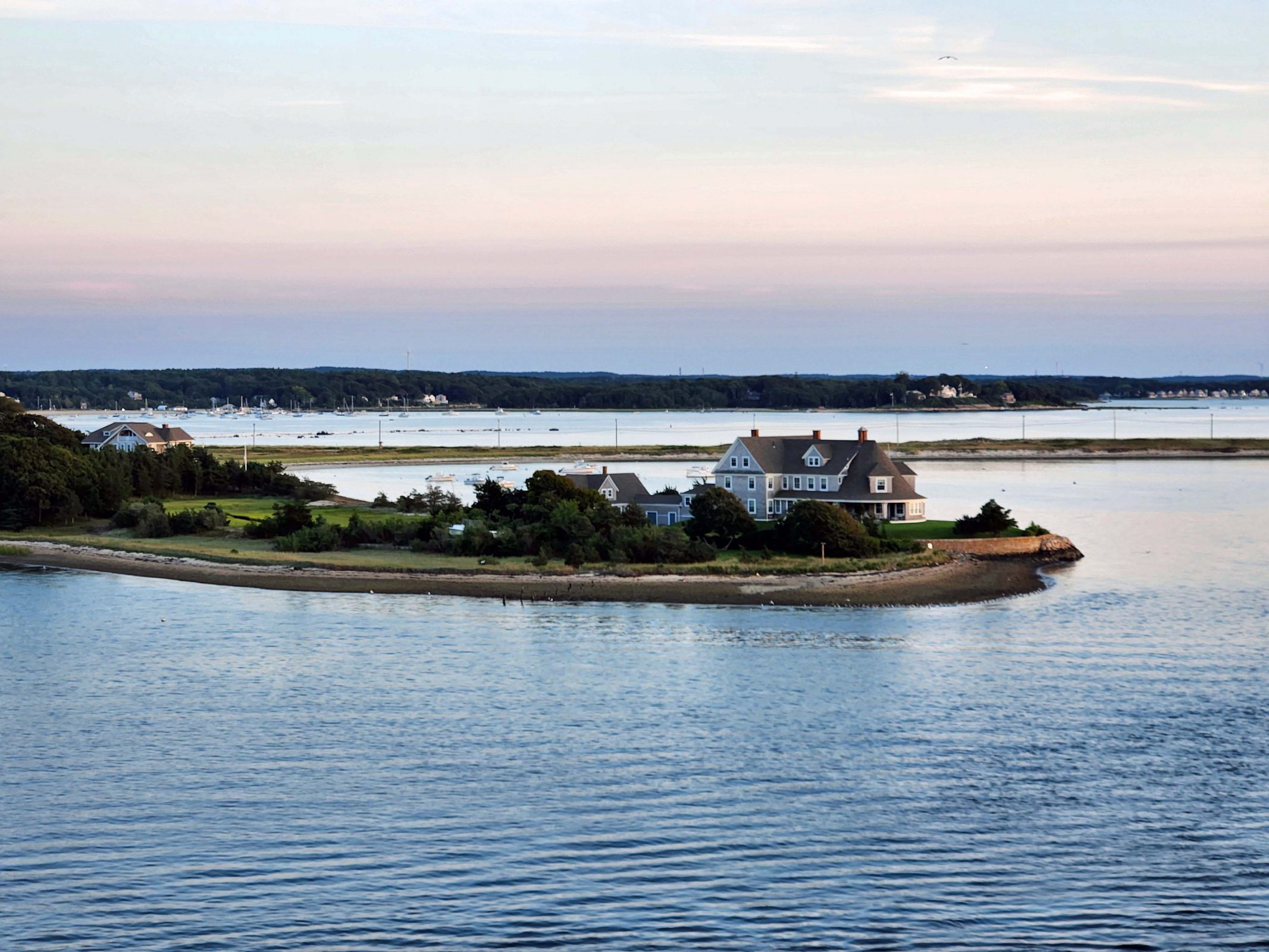
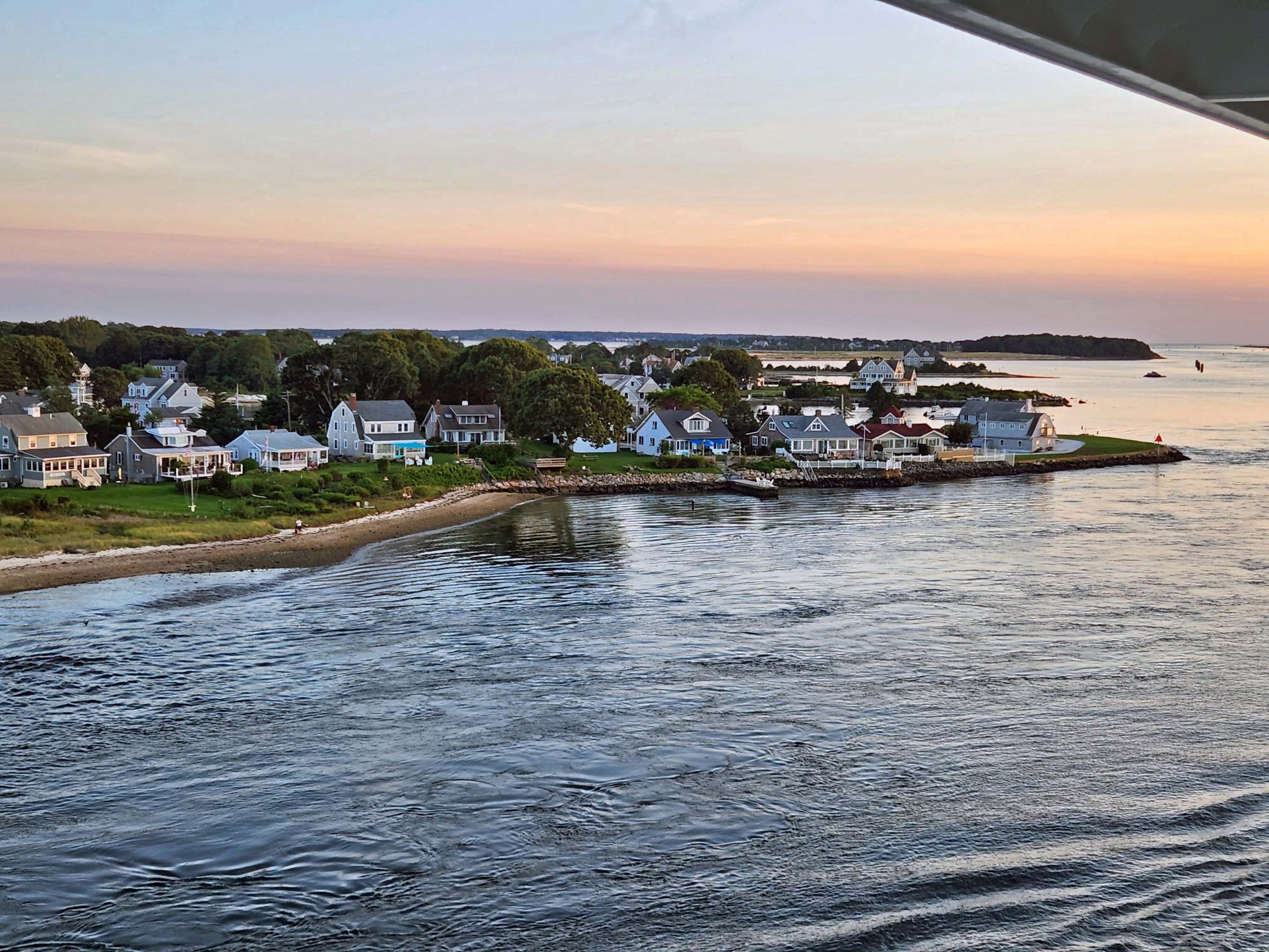
This was my favorite house. I love all those windows. (If I could afford the house, I could afford to have someone else wash all the windows.)
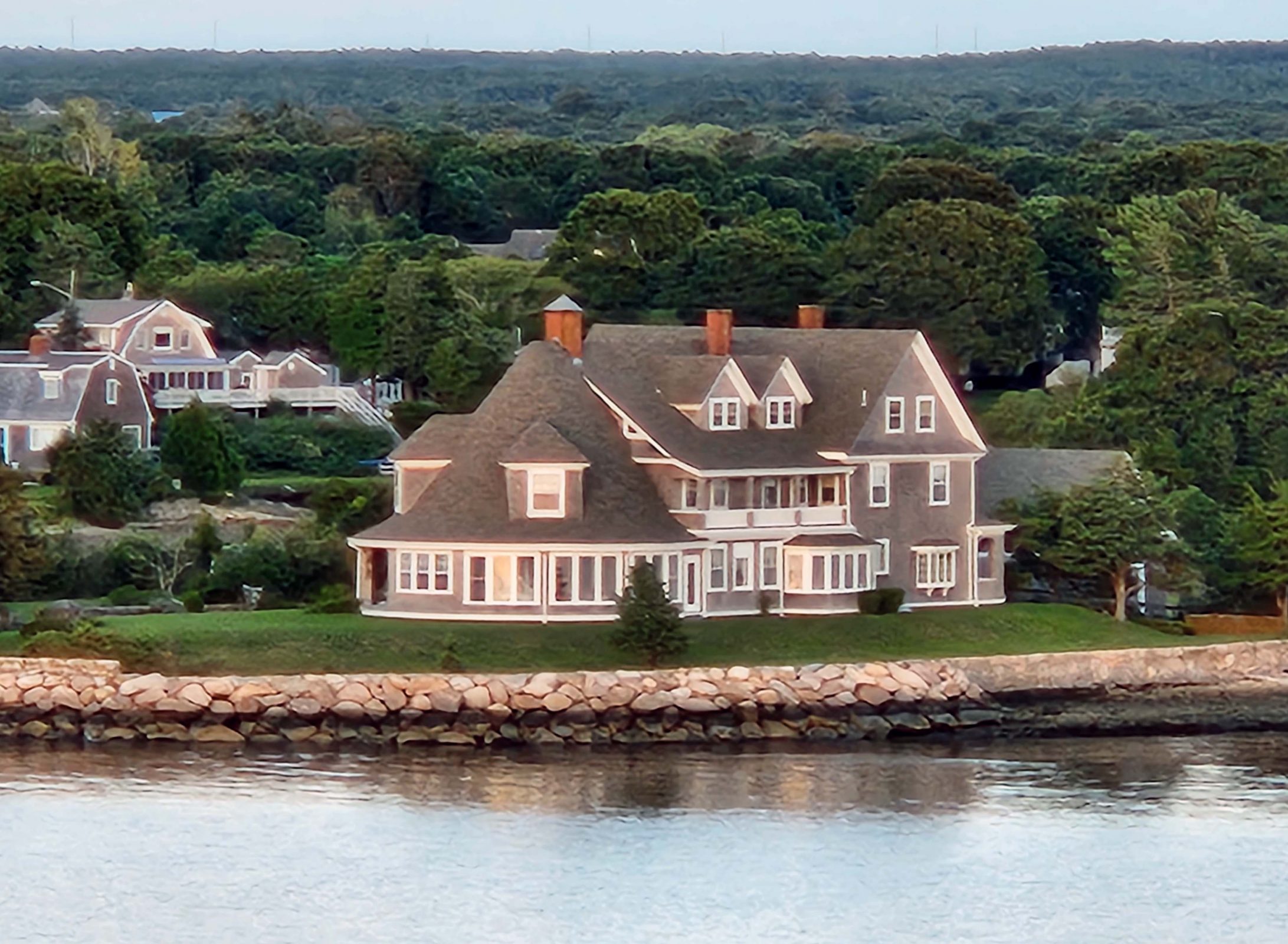
The canal was a lovely end to a wonderful day. Tomorrow: a bucket list check-off.